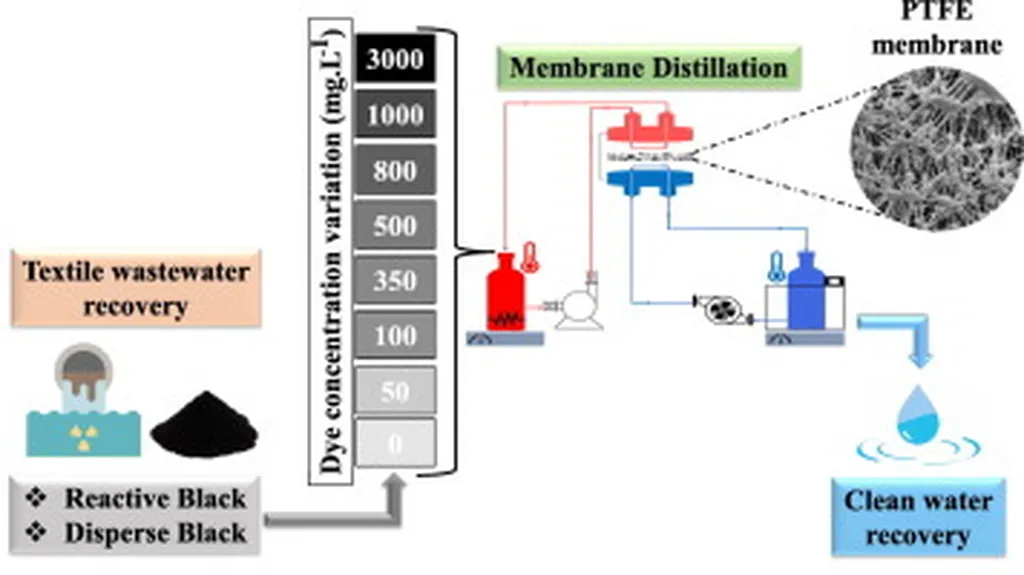In a groundbreaking development that could revolutionize the treatment of textile effluents, researchers have successfully created hybrid polyamide microporous membranes using a waste material, polyamide 66 (PA66). This innovative approach, detailed in a study published in ‘Materials Research’ (or ‘Pesquisa em Materiais’ in Portuguese), not only addresses environmental concerns but also opens new avenues for the energy sector.
The research, led by Airan Magalhães Moura, utilized silicon carbide (SiC) combined with PA66 through a phase inversion technique, employing different solvents such as formic acid and hydrochloric acid. The membranes were rigorously characterized using various techniques, including water absorption, porosity, bubble point, average pore radius, contact angle, chemical resistance, water flow, and effluent flow.
The results were nothing short of impressive. Water-dye separation tests revealed a significant reduction in dye concentration, with all membranes achieving a yield of over 99%. This high efficiency demonstrates the potential of these membranes for treating textile effluents, a major environmental challenge in the industry.
“The success of these membranes in reducing dye concentration is a significant step forward,” said Airan Magalhães Moura. “This technology could be a game-changer for the textile industry, offering a sustainable and efficient solution for effluent treatment.”
The implications for the energy sector are equally promising. Efficient membrane technology can play a crucial role in energy production and conservation, particularly in processes that require the separation of liquids and gases. The use of waste materials like PA66 not only reduces environmental impact but also lowers production costs, making the technology more accessible and scalable.
“This research highlights the importance of innovation in materials science,” added Moura. “By leveraging waste materials and advanced techniques, we can develop solutions that are both environmentally friendly and economically viable.”
The study’s findings suggest that hybrid polyamide microporous membranes could become a standard in effluent treatment and beyond. As the world increasingly focuses on sustainability, such advancements are crucial for shaping a greener future. The research published in ‘Materials Research’ sets a strong foundation for further exploration and development in this field, paving the way for more efficient and eco-friendly technologies.
In the broader context, this research could inspire similar innovations in other industries, driving a wave of sustainable practices. The commercial impacts are substantial, with potential applications ranging from water treatment to energy production. As the world grapples with environmental challenges, technologies like these offer hope and a path forward.
The study’s success underscores the importance of interdisciplinary research and collaboration. By bringing together experts from different fields, we can tackle complex problems and develop solutions that benefit society as a whole. The future of membrane technology looks bright, and this research is a significant step in that direction.

